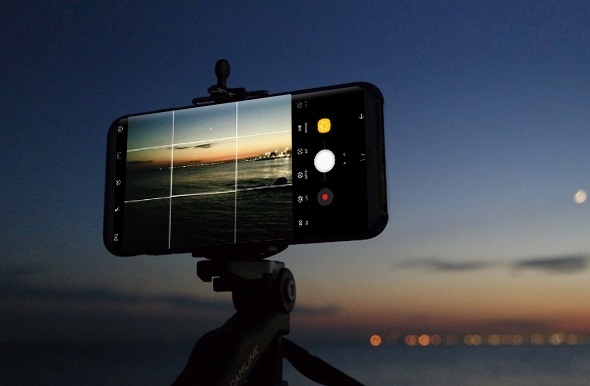Samsung
Triple lens smartphone cameras to lift profit: analysts
[THE INVESTOR] The anticipated deployment of triple-lens camera modules in high-end smartphones will improve the profits of electronics parts makers, according to market analysts on Sept. 3.
Most major smartphone makers, including Samsung Electronics, Apple and LG Electronics, are reportedly preparing to roll out smartphones fitted with three rear-facing camera modules in a bid to step ahead in the premium segment.
“Samsung Electronics will fast respond to the latest smartphone camera trend by adopting the triple-lens camera system for its flagship models early next year,” said Kim Ji-san, an analyst from Kiwoom Investment & Securities.
He anticipated Samsung Electro-Mechanics, the electronic parts making affiliate of Samsung Group, will see a jump in profits in the coming months thanks to the adoption of the new camera system by the tech behemoth.
 |
On the price front, triple-lens camera modules are more expensive than the single- or dual-lens counterparts.
If a single-lens camera module costs, say, US$10 per unit to produce, then the dual- and triple-lens camera modules cost US$30 and US$50, respectively.
An industry source was quoted by local economic news outlet Etoday as saying that “Samsung Electronics has decided to adopt the triple lens modules for its mid-range Galaxy A lineup.”
Galaxy A will become Samsung’s first mobile device with a triple camera setup when it hit shelves in the fourth quarter as expected.
The source also added some models of the three Galaxy S10 variants, which will be launched in March 2019, will feature the same rear camera arrangement.
In March this year, Chinese phone maker Huawei showcased a phone featuring triple camera lenses for the first time in the world, upping the ante in the high-end smartphone sector. Since then, it has been able to outpace Apple in terms of market share, becoming the second largest smartphone maker in the world after Samsung Electronics.
In a conference call in July, the Korean smartphone manufacturer showed a glimpse of its next-generation smartphone models, saying around 10 percent of its smartphones next year are likely to embrace the tri-camera system to provide consumers differentiating features.
The possible supply of high-end camera modules to Chinese smartphone makers Xiaomi and Vivo can help shore up the bottom line of Samsung Electro-Mechanic.
LG Innotek, one of the main camera module suppliers for Apple, can become another benefactor of the latest multi-lens camera trend.
The company has been hit hard by sluggish sales of the US tech giant’s latest iPhone models, including iPhone 8 and iPhone X.
Its operating profit dropped 58.8 percent on-year in the second quarter this year to 13.4 billion won (US$12.06 million) in the wake of Apple’s decision early this year to reduce the production of iPhone X, which features a dual-lens rear camera.
The electronic parts-making affiliate of LG Group, however, will be able to see its sales improve in the coming months thanks to the surging demand for cutting-edge camera technologies.
“More smartphones will come fitted with three camera lenses and 3D-sensing cameras, which enable gesture navigation, spatial recognition and creation of augmented reality content,” said Park Hyeong-woo, an analyst from Shinhan Investment. “LG Innotek now has great growth potential for the next couple of years.”
By Kim Young-won (wone0102@heraldcorp.com)






![[From the Scene] Gigantic Olive Young store lures young trend-setters in Seongsu](http://res.heraldm.com/phpwas/restmb_idxmake.php?idx=151&simg=/content/image/2024/11/21/20241121050065_0.jpg)

